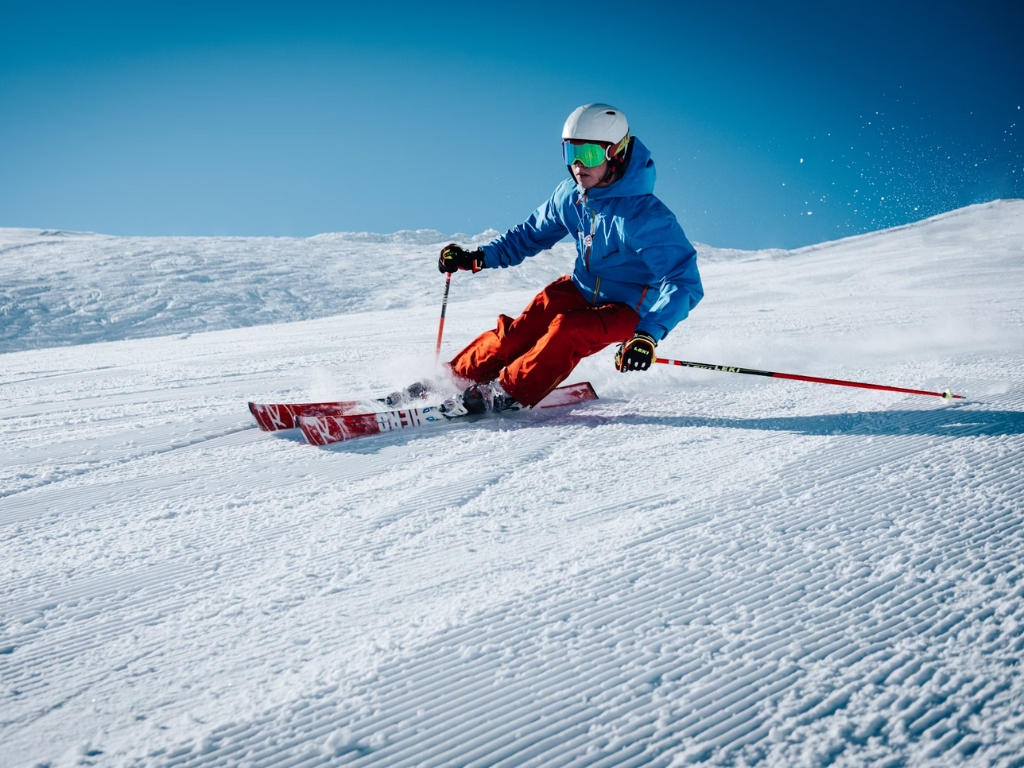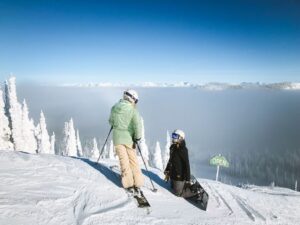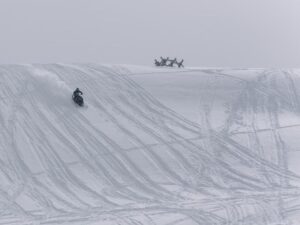Welcome to the slopes of knowledge. Pun intended.
Today, I will carve (this is the last one) into a fundamental topic often misunderstood by most skiers, especially beginners: the ski turn radius.
As a beginner renting skis left and right, have you ever noticed that some take turns easily while others demand muscle and intention? Well, the difference between those two skis is their turn radius.
Now you might ask what exactly is this ski turn radius. And that’s why I am writing this article. So, let’s continue.
1. What is the ski turn radius?
Simply put, ski turn radius is the natural arc a ski will make when put on edge and pressured during a turn. The smaller the radius, the tighter and quicker the ski will turn. Conversely, a larger radius results in broader, more sweeping turns.
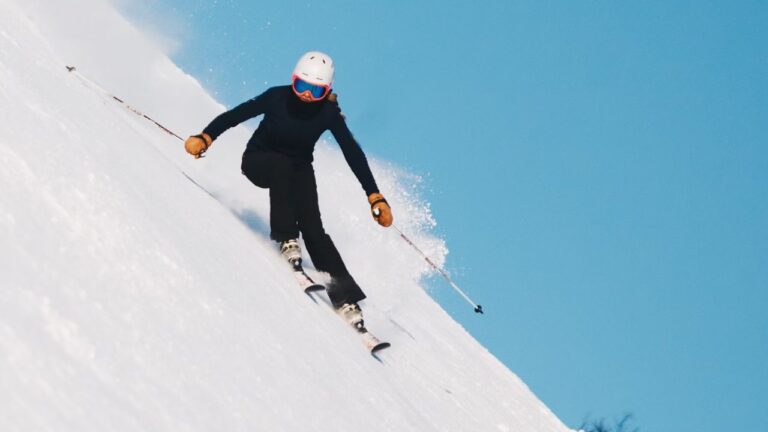
Imagine drawing a line that follows this curve – the tighter this curve, the smaller the radius, leading to quicker turns. It’s like choosing a sports car for tight cornering versus a sedan for long, smooth highways.
Pro Tip: It’s often misunderstood that ski turn radius is the function of your ski’s width. Whereas the ski’s sidecut determines its turn radius. And the ski width depends on your height, weight, and ability level.
2. What effect does radius have on how a ski feels?
As u/nmesunimportnt explained seven years ago on Reddi, “a ski radius is a handy way of finding out what the ski “wants” to do naturally.”
Generally, the turn radius only marginally affects how a ski feels on the snow. If you carve a turn different from your ski’s natural “turn radius,” you’ll have to add additional force that requires skill and practice.
While cruising through white powder, your ski’s stiffness and weight will affect your experience much more than the turn radius.
Realistically, your ski turn radius will not be the most favorable carving route when skiing down the white powder. What if there’s some shrubbery in the arc of your turn radius? You can’t just stop in the middle of the mountain and restart.
As you practice and evolve your skills, you’ll eventually have to learn precise control of your skis. With each turn, you should be able to carve a path suitable for the terrain in front of you regardless of your skis’ sidecut and natural turn radius.
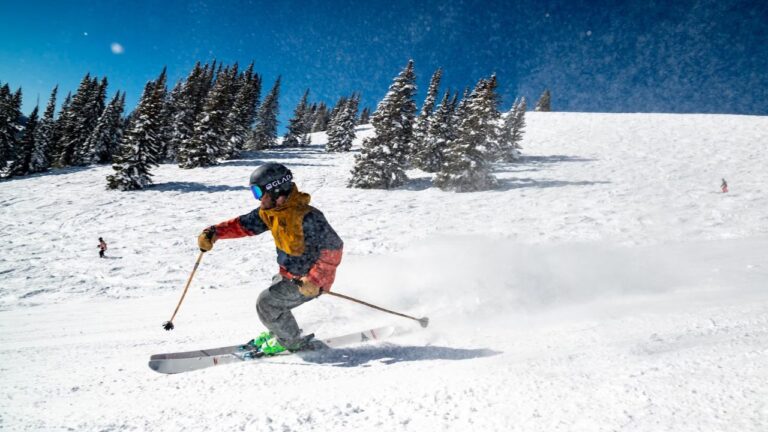
Simply put, the turn radius is like your ski’s personality.
Think about a ski with a small turn radius, around 13 to 15 meters. These skis are like your nimble, agile sports cars. They love quick, sharp turns and are super responsive.
You can easily whip around trees or navigate crowded slopes on these skis. It’s all about agility and quickness, perfect for short, snappy turns.
I remember zipping through a tree line on such skis, feeling like I could turn on a dime – it was exhilarating, to say the least!
On the flip side, skis with a larger turn radius (around 18 to 22 meters or more) are your highway cruisers. They prefer long, sweeping turns and offer stability and smoothness, especially at higher speeds.
3. How much should your ski turn radius be?
| Sidecut | Ski Turn Radius (m) | Ability Level | Skiing Style | Terrain Type |
| Short | 10-15 | Beginner, Intermediate | Slow and Cautious | Moguls |
| Medium | 15-20 | Intermediate, Advanced | Cruise and Glide | Backcountry (with shrubbery), Park, and Moguls |
| Long | 20+ | Intermediate, Advanced | Fast-paced | Backcountry, Park & Deep Powder |
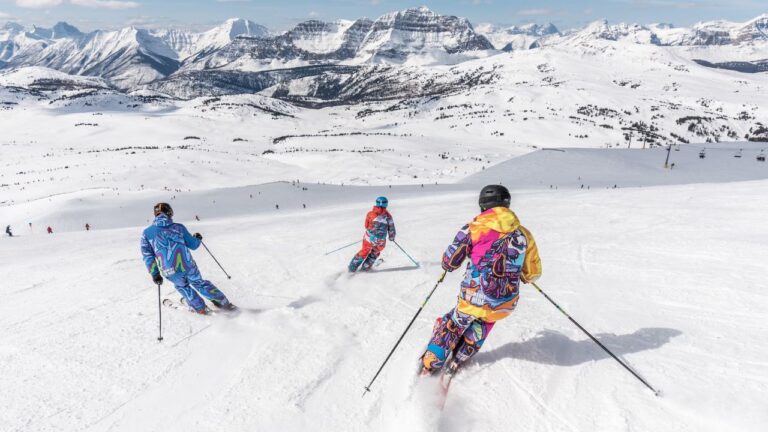
I. Short Turn Radius (10 to 15 meters)
A short ski turn radius is suitable for beginners still getting the hang of controlling speed and learning how to carve. Smaller radius skis are forgiving; they let you make quick turns and adjustments, which is great when you’re still wobbly.
But that’s not all, even intermediate and advanced riders can benefit from shorter turn radius. These skis are ideal for slow and cautious riders who prefer skiing through uncanny terrain.
II. Medium Turn Radius (15 to 20 meters)
Now, if you’ve got a few ski trips, you’re ready to level up. You can handle skis with a medium to long turn radius, about 15 to 20 meters.
These skis let you flow smoothly down the slopes, making those turns feel more natural and less forced. It’s like graduating from short sprints to a steady jog; you’ve got the skills, and now it’s about refining them.
Skis with a moderate turn radius are ideal for carving and gliding through white powder, especially when riding off-piste. They offer the perfect balance and can quickly accommodate short or long turns depending on your skill and control.
III. Long Turn Radius (>20 meters)
For the seasoned pros, talking about ski radius might be old news. You guys can handle long-range skis, over 20 meters, with ease.
These skis are all about maintaining flow and rhythm on those challenging terrains. They’re less about making sharp turns and more about conquering the snow with style and precision.
For the speed demons who love the thrill of racing down the slopes, skis with a longer turn radius are your best bet.
4. Conclusion
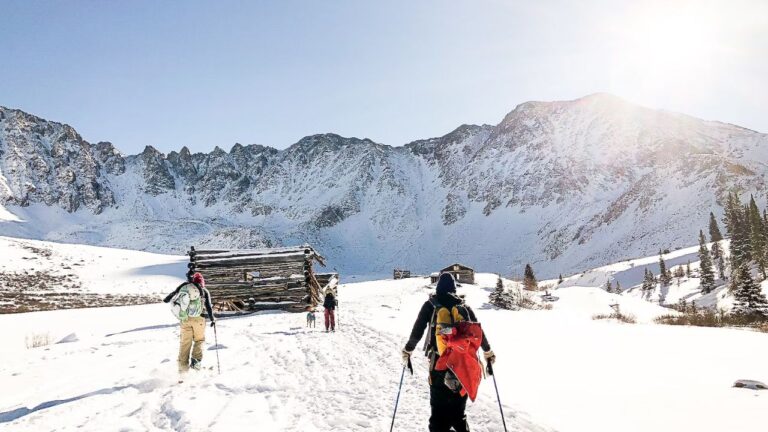
Let me quickly recap the important stuff:
- Ski Turn Radius Basics: It is how tightly your skis can turn. A smaller radius means tighter turns; a larger radius is for those long, sweeping arcs.
- Matching Radius with Skill Level: Beginners are better off with a smaller to medium radius for better control and ease of turning. Intermediate skiers aim for that medium to long radius for a smooth flow. Advanced skiers, you likely already know, but those long radii are your playground.
- Skiing Style and Radius: Choose your ski radius based on your style – whether you’re a cautious cruiser or a speed demon, there’s a perfect radius for your skiing dance.
- Don’t Overthink It: While discussing radius and sidecuts is crucial, don’t get too bogged down in the details. Ultimately, you can supersede the turn radius with skill and control.
- Other Important Factors: Consider the stiffness and weight before the turn radius. A flexible and lightweight ski is far easier to manage and maneuver. In comparison, stiff and heavy skis suit freeriders who prefer fast-paced action.
If you’re unsure about what radius suits you, rent different types of skis before purchasing. Feel how each ski responds to your style.
Ultimately, whether navigating a tight mogul or cruising down a wide-open piste, the right ski turn radius is but a fraction of everything you’ll need to consider. In the long run, it won’t matter all that much.
Happy skiing!

